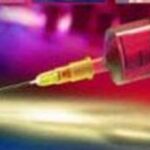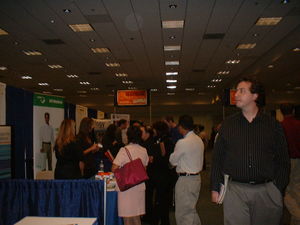Iodine crystals are semi-regulated the United States. The biggest reason being that it’s one of the precursors in the manufacture of methamphetamine. According to Wikipedia, there are several legitimate uses for pure iodine crystals such as disinfecting, staining, radiocontrasting agents, radioiodines, and organic synthesis. Iodine also has common use in photography as an aid in film development.
With years of trial and error, this clandestine chemist has proven two separate ways to extract iodine crystals from tinctures. The first extraction of iodine crystals is an older method that uses 2% iodine tincture The second method of iodine extraction outlined is new, and offers a higher percent yield as compared to the first method. Both of the iodine extraction methods are for the clandestine, or hobby chemist, who enjoys making his own product from what others think might be useless.
2% Iodine tincture extraction method
First, I will explain some of the acronyms that will appear in this tutorial. DH2O is for distilled water. It is just H2O, which is water, with a “D” for distilled in front of it. Next, H2O2 is hydrogen peroxide. For this iodine crystal extraction, we will be using a store bought 3% H2O2 solution. HCL is the next acronym on the list. It stands for hydrochloric acid. It can be bought at any hardware store, usually as a driveway or pool cleaner. The label will usually say muriatic acid, which is a solution of HCL around 30%.
Now to the extraction. Always remember to wear safety equipment! You should always at the very least have on goggles and gloves rated to withstand what you are working with. Never breathe in any vapors coming from the chemicals you are working in. ALWAYS do this in a well ventilated area.
In a ratio form, this is what you will be using for reagents:
Four parts 2% iodine tincture
One part DH2O
Two parts 3% H2O2
You will also need .75 ml 30% HCL per fluid ounce of iodine tincture. You will need a container to hold all of the fluids you now have in front of you. It doesn’t matter if its a bowl, jar, beaker, or anything else. Just make sure to always use glassware.
You start out by pouring the iodine tincture into the container. Slowly add the DH20 and stir, but always avoid splashing. Then, slowly add the HCL and stir.
At this point, you need to wait for about 15 minutes to let the reagents do their work.
After you have waited 15 minutes, add the H2O2 slowly while stirring. At this point, you need to wait for 12 hours.
Now, you need to have a filter and another container ready. I recommend an ultra fine plastic mesh cone filter. It won’t clog, and it won’t absorb any of the liquid. Sometime the color will be too dark, and you can add a bit more H2O2 and let it sit for a second pull. Now you need to rinse the crystals that remain in the filter with copious amounts of water. After this, spoon or tap them onto a stack of three coffee filters. Fold the filters so nothing can come out. Now take some paper towels and wrap them around the filter and try to get as much of the moisture out as you can. The final step is to drop the still closed filter into a container with Damp-Rid or any kind of moisture absorbing product. If you chose to add more H2O2, proceed in the same fashion for the second pull.
The final product from the iodine crystal extraction should be stored in an air-tight container where little light is present. Light and moisture will degrade your iodine crystals.
The second iodine extraction method is a newer one, formed from my own experimentation. Its main advantage is increased iodine crystal yield. For anyone who will actually be using the product instead of just performing the iodine crystal extraction for fun, this will be a huge benefit for you.
For this iodine crystal extraction, the same acronyms appy, and the same safety procedures apply as well. Please do not bypass the safety procedures on this extraction or any technique using chemicals.
7% Iodine tincture extraction method
The reagents you will need are:
One pint 7% iodine tincture
One pint 3% H2O2
Two cups DH2O
One ounce HCL
Pour the iodine tincture into a gallon or half gallon jar. Slowly pour in the DH2O and mix well. Now pour in the HCL, stir, and wait fifteen minutes. After the fifteen minutes, slowly pour in the H2O2 while stirring. Seal the jar with a lid. If the lid you are using is metal, make sure to put saran wrap or a Ziploc bag over the mouth of the jar and rubber band it tightly in place. Let the mixture sit for twelve hours. Now, you need to filter the crystals out with a ultra fine plastic mesh cone filter, or any filter of your choice. Make sure to save the liquid. Tap the crystals into a stack of three coffee filters and wrap them up. Use paper towels to dry as much of the moisture out of the filters as you can. Finish by dropping the still wrapped up iodine crystals into a container of Damp-Rid or any kind of moisture absorbing product. Now, add another one-quarter cup H2O2 to the liquid and repeat the previous steps the harvest another five to ten grams of iodine crystals. You should yield 45-48 grams of dry iodine crystals from this method if done correctly.
The final product from the iodine crystal extraction should be stored in an air-tight container where little light is present. Light and moisture will degrade your iodine crystals.
http://en.wikipedia.org/wiki/Iodine#Applications


